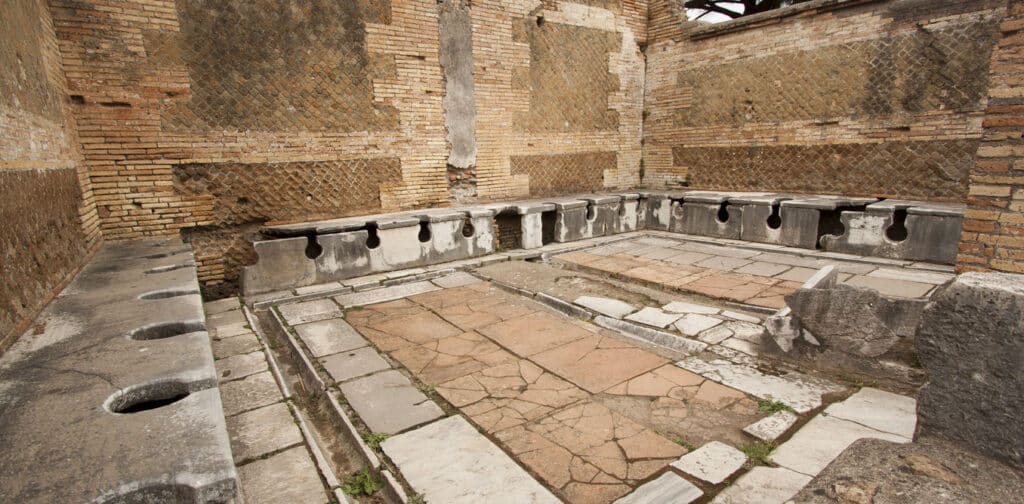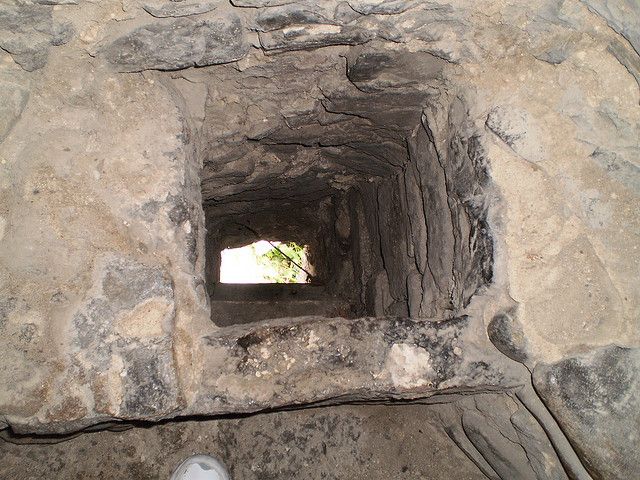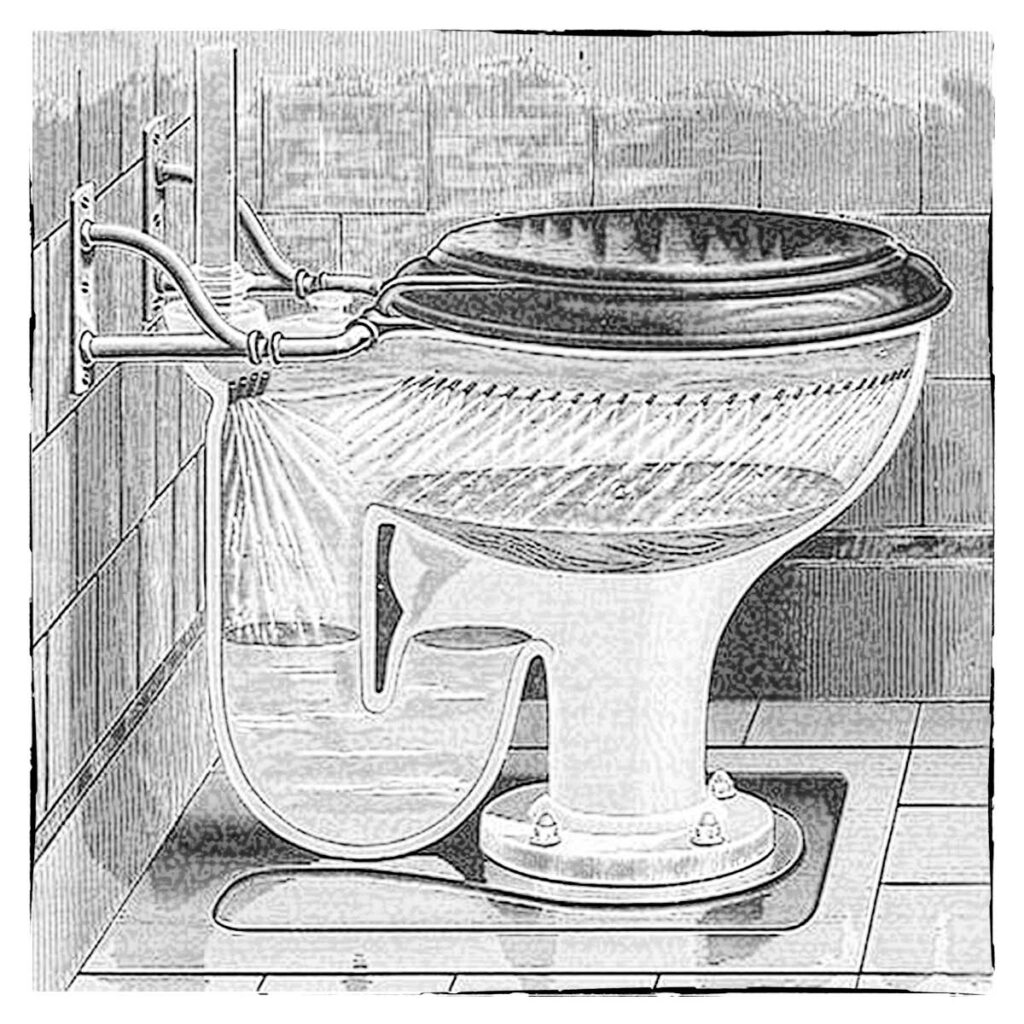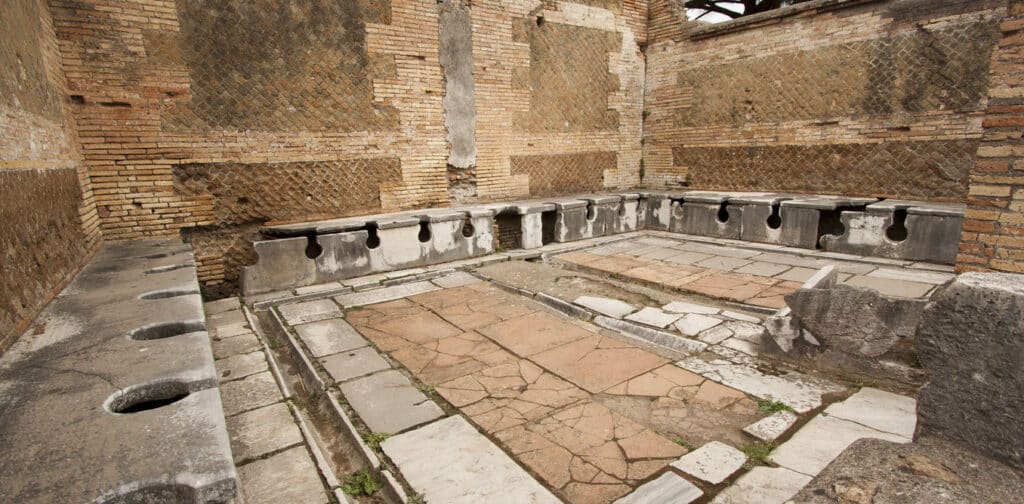Everybody poops. This is one of humanity’s truths, such that we tend not to think about it too much unless the person in question has a low fiber diet. Though people have been experiencing normal biological functions since before the dawn of civilization, a way to remove that waste healthily and reliably has shifted and changed from culture to culture and era to era. In general, the history of plumbing and plumbing systems have been relatively consistent throughout history, though the means and materials have changed.
When Was Plumbing Invented?

Exactly who invented plumbing is difficult to answer. Sewer systems are as old as civilization, with early pipes made from clay and straw, so perhaps it was invented in Ancient Babylon or some other city.
What we do know is that the Ancient Egyptians built the first copper pipes. Due to the Nile River’s regular flooding, the Egyptians had extensive knowledge of irrigation and waterworks, creating a sewer system and irrigation. When someone poses the question of when was running water invented, it is safe to say the answer was during Ancient Egypt, though a precise date is impossible to pinpoint.
Plumbing and the Greeks and Romans
The Ancient Greeks expanded the history of plumbing and running water by inventing hot and cold running water for baths and the like. These early plumbing systems involved architectural and design feats, and as a result, personal running water and toilet systems were reserved for the wealthy. We now associate ancient Greece’s hot and cold water systems with the services they provided for Olympic athletes.
This trend continued in Ancient Rome, where the wealthy could afford to put Roman engineering into home plumbing. The ordinary people made do with public baths and toilets, which were impressive in their own right to handle the general populace’s load. The Ancient Romans also built aqueducts to transport water from the mountains into the city. This allowed for regular water supply in Rome and other major cities.
The Romans built elaborate and massive baths, both public and private, for personal bathing and political meetings. Much of the water brought into Roman cities went to the baths. Baths greatly improved public health, particularly those with abundant supply, and experienced a rapid water turnover. In towns that used cisterns, water turnover was slow, likely resulting in a net negative for public health.

The Romans shifted away from the copper pipes invented by the Egyptians in favor of lead pipes. A recent study found that Roman tap water had 100 times the lead content as normal spring water. As a result, Roman elites suffered from gout, infertility, and mental disorders at a considerable rate, to the point that some historians blame the fall of the Roman Empire on lead pipes. Plumbing both helped build and potentially destroyed a civilization!
Plumbing After The Roman Empire
After the Roman Empire’s fall, the aqueducts fell into disrepair and disuse. Civilization roiled for much of the Middle Ages, and as a consequence, the history of plumbing in Western Europe stagnated. In the Eastern remains, the Byzantine Empire, the previous infrastructure saw continued use and maintenance. As the Empire fell, however, it found the efforts of maintaining the plumbing infrastructure difficult.
The rest of Europe made do as best they could. Medieval towns, monasteries, and castles tended to have fountains, wells, and cisterns. People built modest latrines, which rarely could meet the demands of the population. Poor sanitation, as a result, made epidemics rampant in Medieval Europe.

Meanwhile, in other civilizations, plumbing developed in many different ways. In the Han Dynasty China, roughly around the change from BC to AD, the Chinese developed a way to drill into groundwater and use hollow bamboo reeds to extract. In some places, they developed pig toilets that connected the restroom to a pigsty. The pigs would consume the excrement, significantly improving public health.
The History of Modern Plumbing
New plumbing advancements started around the time of the Early Modern Period. Queen Elizabeth I of England was gifted with the first flushable toilet, though she was too scared to use it because the loud rush of water bothered her. Generally, though, early cities were notoriously filthy and disease-ridden. The first commonly accessible water closets, or bathrooms, would become commonplace in the Western world until the twentieth century. It was invented much earlier, as noted before, and the first patent for a flush toilet was submitted in 1775. The first showers came about in 1810.

Some improved water systems and plumbing were necessitated by cities fighting to clean up and curtail deaths from the disease. Sanitation in European towns was one of humanity’s best achievements in the 19th century. Scientists discovered water’s role in diseases like cholera, dysentery, and typhoid fever’s transmission. This discovery drove significant advancements around the world.
The city of Philadelphia, Pennsylvania, undertook to create a safer water supply in 1815 with a turbine-powered water system. In 1830, New York City installed water mains, which were the first public ones in use. Running water would reach the White House in 1833. For most of the nineteenth century, however, the trend of the ancient civilizations prevailed. Those with means had access to running water in their homes, while many, usually large tenements in the cities filled with poor immigrants, made do with public wells and toilets or outhouses.
It should be noted that until the dawn of the twentieth century, the bulk of the world’s population, and certainly the people of the United States, resided on farms and in rural towns and villages. These folks often made do with a simple outhouse or latrine system, using wells and cisterns of water much as their medieval counterparts did. It would take time for modern plumbing and running water to reach these areas.
It would not be until the 1930s that rural locations received such modern conveniences in large numbers. Before running water, rural families used outhouses without toilet paper. Bathing was reserved for once a week using shared bather water heated on the stove. Running water improved public health, causing rural people to walk away from outhouses. Pumps for wells and homes were early precursors to faucets and spigots as far as running water was concerned. To this day, some people still utilize a well system instead of municipal water sources.

As for urban locations, they eliminated most health problems associated with water pollution in industrialized countries in the 20th century. Chlorination and water treatment became widely adopted. To this day, water pollution issues do still exist in developing countries.
The twentieth century proved the birth of new markets and options in plumbing. As plumbing fixtures such as running water, toilets, bathtubs, and the like became more widely available, more companies started marketing different designs for aesthetic reasons and functional. Mail-order catalogs started carrying bathroom setups to take advantage of the new markets. Though it took time, running water and personal plumbing became common and reliable enough for a bathroom to become standard in homes and apartments across the country.
Despite the advances that stemmed from the invention of running water and plumbing, there are still issues when it comes to water safety. Bio-hazards transmitted via water is a major fear in the post-modern world. The number of potential chemical and biological health hazards has grown exponentially since the 1960s, while our technology hasn’t risen to meet them.
The needs of countries and municipal sources to handle these changes are a daunting one, but they are the future. Plumbing has undergone many advances over the centuries, but at its core, the mechanisms of moving water remain largely the same. Water is moved from where it is to where it needs to be. Whether this is done mechanically or via gravity has been a major advancement of civilization, but the basic technology is the same.
Sewer systems and the like have become much more complex and efficient, but there is still work to be done. More toxic metals and chemicals have entered people’s water systems. That means there are still improvements that can be implemented, as technology advances and develops just as it had since the early sewer systems of Ancient Egypt and China.
Fun Historical Facts about Plumbing
- Poor water sanitation likely killed President William Henry Harrison, as excrement tainted the White House groundwater.
- John Kohler created a cast iron bathtub in 1883 out of a horse trough. Kohler is a significant provider of toilets and other fixtures today.
- We know about ancient Egypt plumbing because of the pyramids – researchers discovered bathrooms and other plumbing fixtures there.
- The first shower, invented in 1810, was more of a novelty. It continuously recycled the wastewater and dumped it back over your head. These seemed absurd to many people, who preferred bathtubs.
- England passed the National Public Health Act in 1848. This law became a framework for sanitation codes worldwide.
- Laws introduced during World War II restricted copper, iron, and steel usage. The plumbing industry had to get creative, explaining why many toilets are made out of plastic and porcelain today.
- California introduced the first water-saving law in 1978, prohibiting water usage over 3.5 GPF.
- Tulip Mania – The Story of One of History’s Worst Financial Bubbles - May 15, 2022
- The True Story of Rapunzel - February 22, 2022
- The Blue Fugates: A Kentucky Family Born with Blue Skin - August 17, 2021
